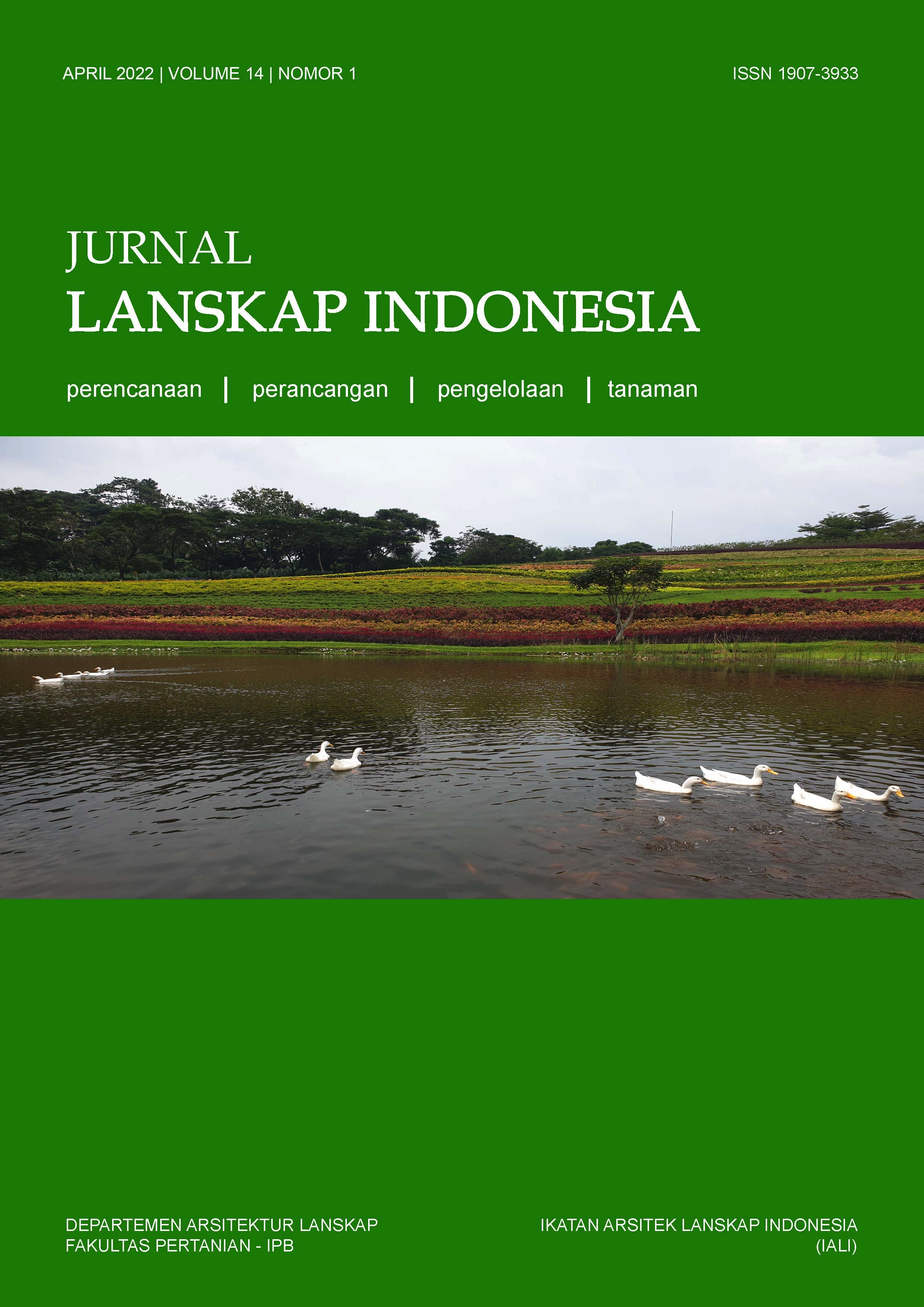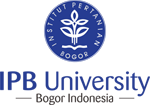Penerapan Konsep Walkable Campus pada Perancangan Jalur Pedestrian Kampus Diponegoro UKSW
Abstract
Walkable Campus is a pedestrian track design concept that prioritizes connectivity, accessibility, security, comfort, and beauty. The UKSW pedestrian track needs to be evaluated so that it can meet the needs of users. The evaluation was carried out using the walkable campus concept, so this study aims to produce a pedestrian path design based on a walkable campus. The research method used is descriptive statistics and Scenic Beauty Estimation (SBE). Descriptive statistics were used to evaluate connectivity, accessibility, security, and convenience. While SBE is used to evaluate beauty. There are 5 spots out of 3 zones where zone 1 has 2 spots, zone 2 has 1 spot, and zone 3 has 2 spots. The results of the descriptive statistical test show that the connectivity, accessibility, security, and comfort of the 3 zones received poor ratings from users. Therefore, the results of the evaluation of user perceptions are used to make a design proposal. The proposed design is made to meet the aspects of connectivity, accessibility, security, and convenience. Meanwhile, the results of the SBE evaluation show that the aesthetic condition of the existing pedestrian paths from 5 spots has a low SBE value when compared to the 3 proposed designs. In addition, the SBE evaluation is used to determine the design recommendations. There are 5 designs that meet the walkable campus concept.
Downloads
References
Afiyanita, H., Kaswanto, R.L. 2021. Evaluation of Urban Landscape Visual Quality based on Social Media Trends in Bogor City. IOP Conference Series: Earth and Environmental Science 622 (1) 012022. IOP Publishing DOI: https://doi.org/10.1088/1755-1315/622/1/012022
Anwar, S., Kaswanto, R.L. 2021. Analysis of Ecological and Visual Quality Impact on Urban Community Activities in Bogor City. IOP Conference Series: Earth and Environmental Science 879 (1) 012035. IOP Publishing. DOI: https://doi.org/10.1088/1755-1315/879/1/012035
Daniel, C., Boster, R.S. 1976. Measuring Landscape Aesthetic: The Scenic Beauty Estimation Method. USDA, New Jersey.
Danisworo, M. 1991. Teori Perancangan Urban. Program Studi Perancangan Arsitektur Fakultas Pascasarjana Institut Teknologi Bandung.
Febriana, N.P.R., Kaswanto, R.L. 2015. Tourism Track Management of Cibeureum Waterfall as a Provider of Landscape Beautification Service at Gunung Gede Pangrango National Park. Procedia Environmental Sciences 24, pp 174-183. DOI: https://doi.org/10.1016/j.proenv.2015.03.023
Regita, R.S., Simangunsong, N.I., Chalim, A. 2021. Kajian Peletakan Fungsi Vegetasi terhadap Kondisi Ruang Terbuka Kampus. Studi Kasus: Indonesia Port Corporation University, Ciawi, Bogor. Jurnal Lanskap Indonesia, 13(2) 38 - 44. DOI: https://doi.org/10.29244/jli.v13i2.33327
Republik Indonesia. 2018. Peraturan Menteri Pekerjaan Umum No. 02/SE/M/2018 tentang Perencanaan teknis fasilitas pejalan kaki.
Pratiwi, R.D., Fatimah, I.S., Munandar, A. 2019. Persepsi dan Preferensi Masyarakat terhadap Infrastruktur Hijau Kota Yogyakarta. Jurnal Lanskap Indonesia 11(1) 33-42. DOI: https://doi.org/10.29244/jli.v11i1.20563
Shirvani, H. 1985. The Urban Design Process. Van Nostrand Reinhold, New York.
Southworth, M. 2005. Reclaiming the Walkable City. Jurnal Internasional of Urban Desain and Planning. DOI: https://doi.org/10.1061/(ASCE)0733-9488(2005)131:4(246)
Wati, H.M., Widyawati, N. 2019. Evaluasi Aspek Fisik dan Kenyamanan Pedestrian di Jalan Diponegoro Salatiga melalui Persepsi Masyarakat. Jurnal Lanskap Indonesia 11(1) 26-32. DOI: https://doi.org/10.29244/jli.v11i1.20670
Copyright (c) 2022 Isna Nugraha Wibawa, Alfred Jansen Sutrisno

This work is licensed under a Creative Commons Attribution 4.0 International License.
This journal permits and encourages authors to post items submitted to the journal on personal websites or institutional repositories both prior to and after publication, while providing bibliographic details that credit, if applicable, its publication in this journal. However, after the article is submitted and published in this journal, it is fully copyrighted by the Jurnal Lanskap Indonesia or JLI. If excerpts from other copyrighted works are included, the author must obtain written permission from the copyright owner and give credit to the source in the article. Then, the writer or reader is allowed to copy, share, and redistribute articles/material in any form. But it must still include the appropriate source and credit because the article in this journal is licensed by Creative Commons Attribution 4.0 International License (CC BY 4.0).
I. Proposed Policy for Journals That Offer Open Access
Authors who publish with this journal agree to the following terms:
- Authors retain copyright and grant the journal right of first publication with the work simultaneously licensed under a Creative Commons Attribution License that allows others to share the work with an acknowledgement of the work's authorship and initial publication in this journal.
- Authors are able to enter into separate, additional contractual arrangements for the non-exclusive distribution of the journal's published version of the work (e.g., post it to an institutional repository or publish it in a book), with an acknowledgement of its initial publication in this journal.
- Authors are permitted and encouraged to post their work online (e.g., in institutional repositories or on their website) prior to and during the submission process, as it can lead to productive exchanges, as well as earlier and greater citation of published work (See The Effect of Open Access).
II. Proposed Policy for Journals That Offer Delayed Open Access
Authors who publish with this journal agree to the following terms:
- Authors retain copyright and grant the journal right of first publication, with the work after publication simultaneously licensed under a Creative Commons Attribution License that allows others to share the work with an acknowledgement of the work's authorship and initial publication in this journal.
- Authors are able to enter into separate, additional contractual arrangements for the non-exclusive distribution of the journal's published version of the work (e.g., post it to an institutional repository or publish it in a book), with an acknowledgement of its initial publication in this journal.
- Authors are permitted and encouraged to post their work online (e.g., in institutional repositories or on their website) prior to and during the submission process, as it can lead to productive exchanges, as well as earlier and greater citation of published work (See The Effect of Open Access).



























